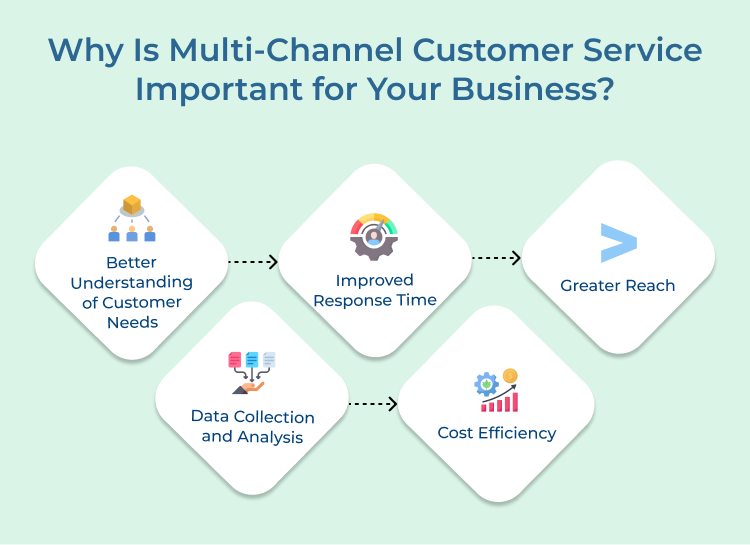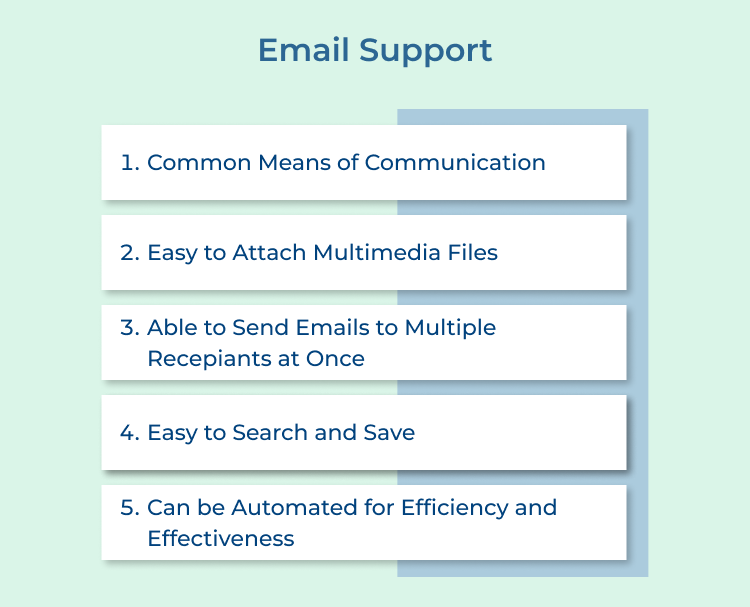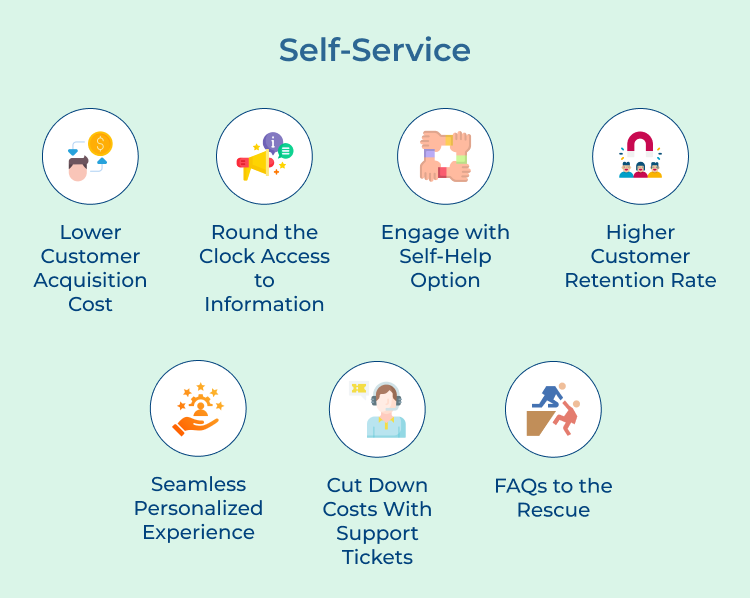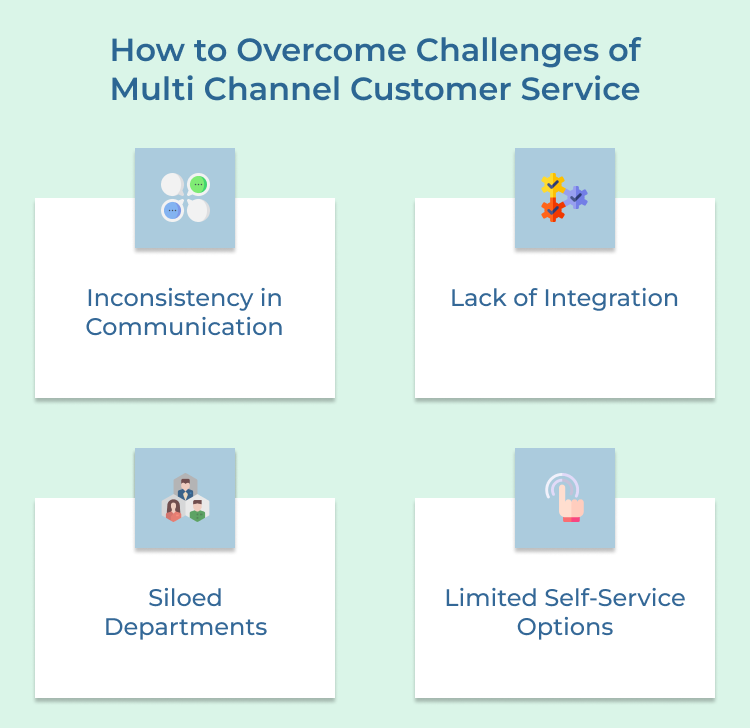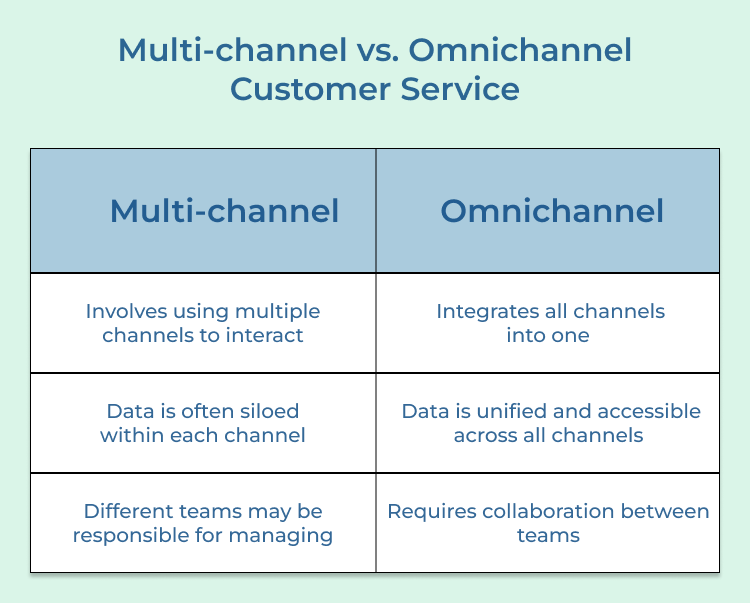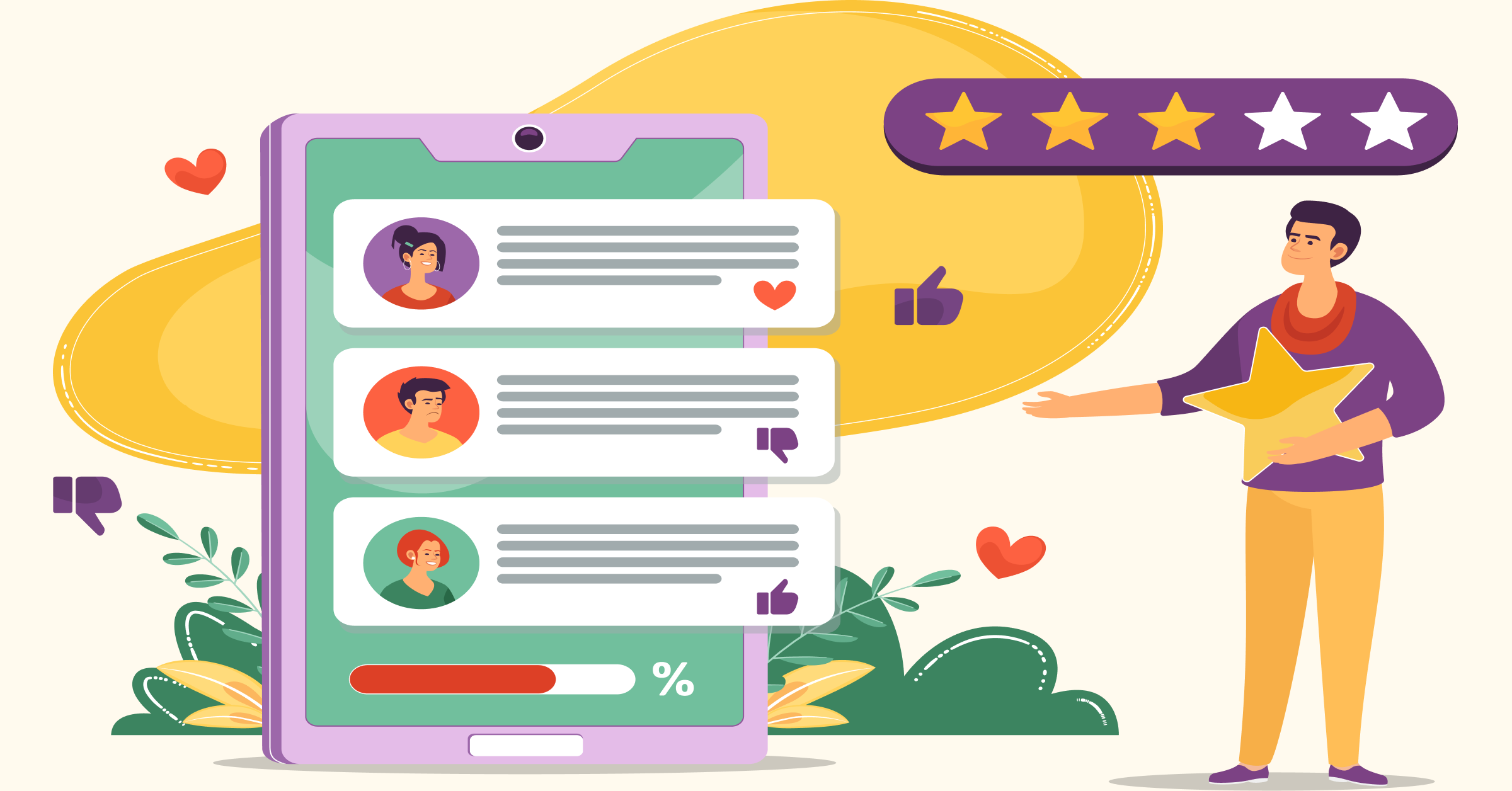1. Channels & Integration
Multi-channel customer service involves using multiple channels to interact with customers, such as phone, email, chat and social media. But, these channels typically operate independently of each other. Omnichannel support strategy is to integrate these channels to provide a unified customer experience.
2. Siloed vs. Unified Data
In a Multi-channel approach, customer data is often siloed within each channel, making it a unique interaction at each touchpoint. In contrast, Omnichannel customer service ensures that all customer data is accessible across all channels.
3. Coordination & Consistency
With Multi-channel customer service, different teams may be responsible for managing each channel. However, it isn’t the same when it comes to omnichannel customer service. It requires collaboration and communication between various teams.
4. Reactive vs. Proactive
Often being reactive in nature, multi-channel customer service deals with customer inquiries being addressed on a channel-by-channel basis as they arise. Omnichannel customer service, on the other hand, takes a proactive approach by anticipating customer needs \based on their past interactions.
5. Channel & Customer Focus
In a Multi-channel approach, the focus is on managing and optimizing each individual channel to meet customer needs. Omnichannel customer service shifts the focus to the customer by prioritizing their needs and preferences regardless of the channel they choose to use.
6 Tips for Building a Multi-Channel Customer Support Strategy
A multi-channel customer support strategy allows customers to reach out for assistance through various channels such as phone, email, live chat, social media and more. Here are some tips for building an effective multi-channel customer support strategy:
